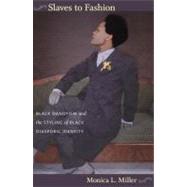Slaves to Fashion
, by Miller, Monica L.- ISBN: 9780822346036 | 0822346036
- Cover: Paperback
- Copyright: 10/30/2009
The first book on the history of black dandyism,Slaves to Fashionexamines the pivotal role that style has played in the politics and aesthetics of African diasporic identity formation. The figure of the black dandy first emerged in eighteenth-century England as an attempt to control the representation of Africans by imposing upon domestic slaves luxurious uniforms intended to flaunt their masters' wealth. These uniforms were soon manipulated by those who wore them, initiating a struggle between master and slave in which style emerged as a primary means of self-expression for blacks. Tracing the history of the black dandy forward to contemporary celebrity incarnations such as Andre 3000 and Sean Combs, Monica L. Miller explains how black people became arbiters of style and how they have historically used the dandy's signature tools-clothing, gesture, and wit-to break down limiting identity markers and propose new, fluid ways of fashioning political and social possibility in the black Atlantic world. Miller draws from literature, film, photography, print ads, and music to generate a cultural history of the black dandy, ranging from Mungo Macaroni, a freed slave and well-known dandy in the London social scene in the eighteenth century, to the ways that contemporary visual artists represent the black dandy as an emblem of black cosmopolitanism. Along the way, she addresses the role of the black dandy in nineteenth-century American literature and drama, W. E. B. Du Bois's use of the dandy to investigate the relationship between black masculinity and cultural nationalism, and black dandyism in the modernist aesthetics of the Harlem Renaissance. With masterful aplomb worthy of its iconographic subject,Slaves to Fashionanalyzes and celebrates the black dandy as a cultural figure in the Atlantic diaspora.







